Fifty people attend to learn more about forestry and logging.
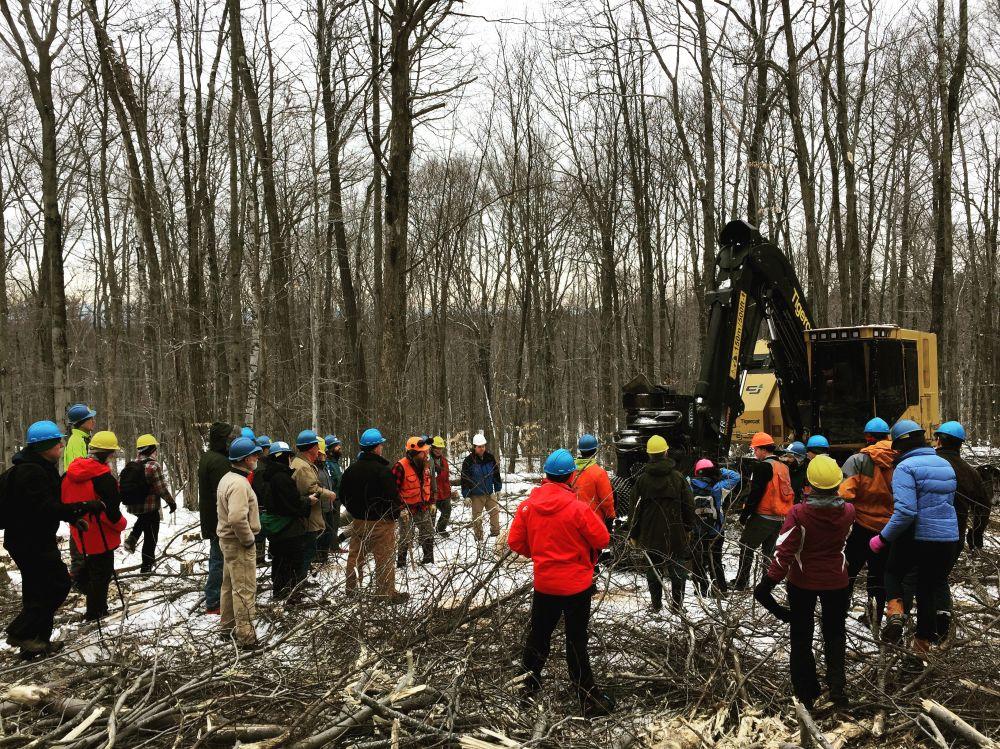
Tour meets logger Ryan Mingarelli and the Tigercat mechanized harvester, the "cutter" working in a patch cut
On Saturday, January 7, fifty people hiked from the active timber landing along the Marlboro Trail to see active timber harvesting on 65 acres on the lower slopes of the Forest Society's 4500-acre Monadnock Reservation in Jaffrey. Forestry prescriptions include individual tree selection and small groups selection cutting to retain partial shade and 1 to 2 acre patch cuts, regeneration harvesting to allow more sunlight which favor regeneration of early successional species. Another high quality timber and wildlife tree species is red oak which requires larger openings and more disturbance to open the canopy and heat up soil on drier sites to which red oak is best-adapted.
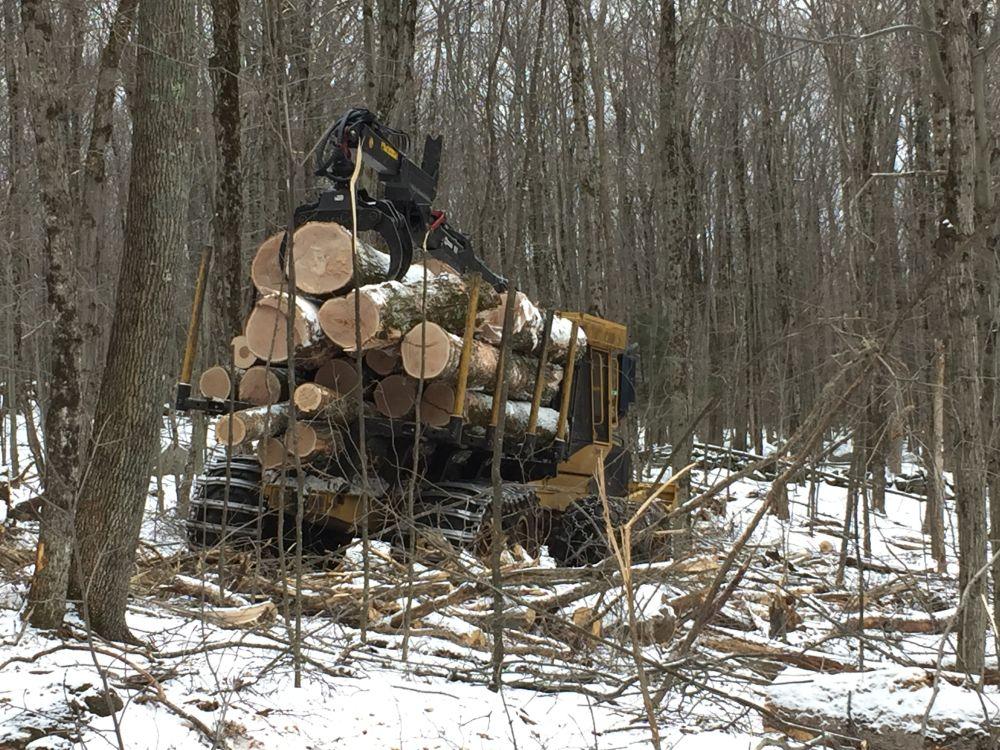
The mechanized timber harvest taking place near the Marlboro Trail at Mount Monadnock, employs a mechanical harvester and a wheeled "forwarder" with steel chains which carries the logs to the relatively small log landing near the road access to the job site.
Walking along the frozen trail used by the forwarder can be challenging. The slash used to cushion low spots is difficult to navigate on foot and thus far this winter the snow depths have not necessitated wearing snowshoes. Along the way, participants learned about which trees are marked to cut and which trees are selected to grow into the next crop.
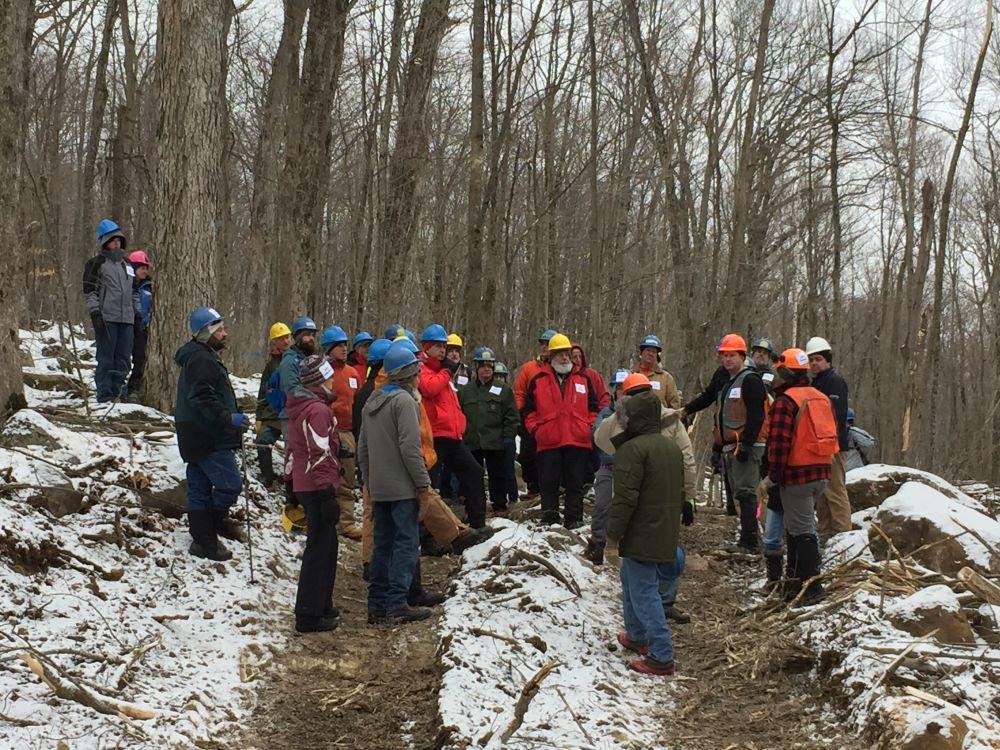
For some, the appearance of sudden and dramatic change when trees are cut can be surprising. The goal of the tour is to share the goals of the management plan and harvest plan which implements the silvicultural prescriptions contained in the management plan. Timber harvesting provides revenue to offset land ownership costs including property taxes.
An enthusiastic cadre braved the single-digit low temperatures. Our group collectively hiked up the Marlboro Trail and followed skid trails west into the Forest Society's recently-acquired Stowell tracts. Forestry expertise for this tour was provided by Bay State Forestry's consulting forester, Jeff Snitkin and UNH Cooperative Extension Cheshire County forester, Steve Roberge and the Forest Society's managing forester, Wendy Weisiger.
Roberge explained how much of NH's forests are relatively even-aged and now mature at age 80 to 100 years old. The opportunity to create pockets of younger forests for the wildlife species dependent upon this age class is another goal. Enhancing wildlife habitats and protecting water quality and scenery are important considerations during timber harvesting on the Forest Society's Monadnock Forest Reservation.
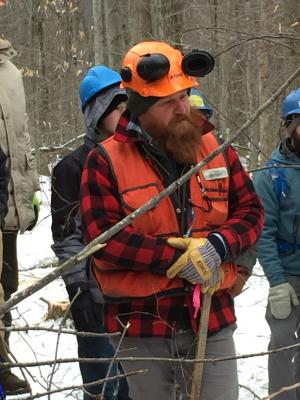
This harvest utilizes "cut to length" harvesting equipment. The tour group watched logging contractor, Ryan Mingarelli operate the mechanical harvester. The processing head measures logs and drops them in a pile. It can then lay down the brushy tops to create a track to move along while continuing to measure and cut off sawlogs and pulpwood which are stacked for the forwarder to load and carry to the log landing - "forwarding" the logs to the landing as opposed to "skidding" or dragging them with a conventional, rubber-tire cable skidder which uses a winch to drag hitches of logs along the ground.
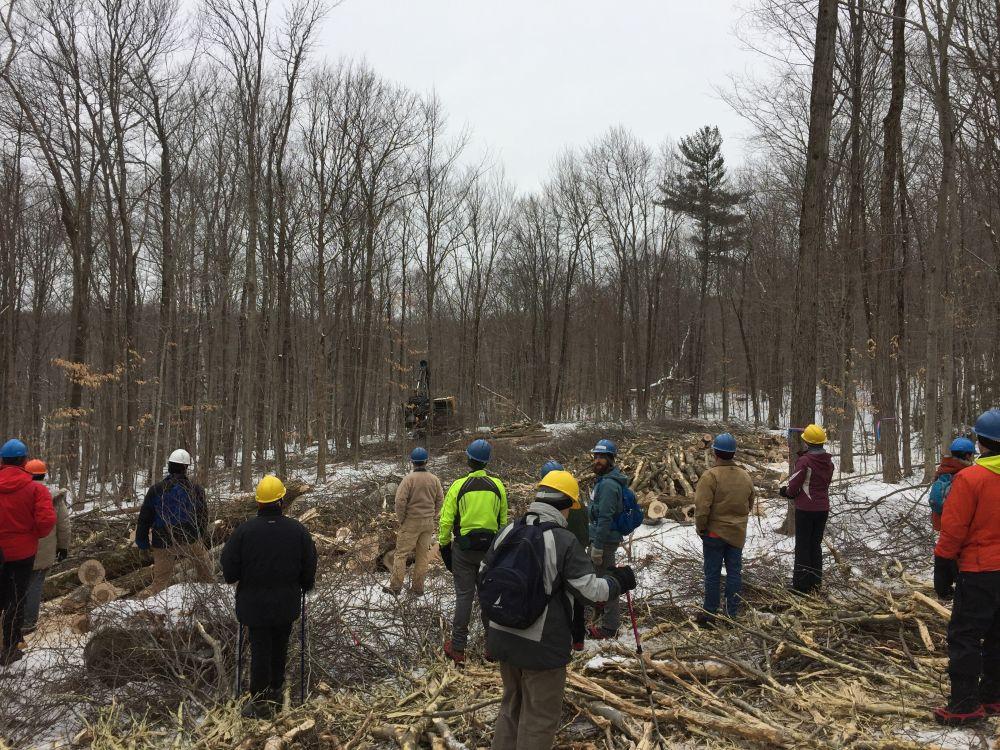
Mingarelli shut down his machine and climbed out to talk to the group about his work and his equipment and in particular the costs of machinery and the operating expenses and the wood production. It is always fascinating for the public to get a chance to meet a NH logger and learn more about the profession and the machinery.

Back at the timber landing, the group has a chance to look at the products: sawlogs and pulp logs.
This particular harvest has very little softwood volume. The wood is primarily sugar maple, white ash and red oak sawlogs and includes beech, birch and red maple fuelwood. The tops or brush is being left in the woods. There is no chipping or whole tree harvesting on this job.
Markets for low grade wood have been very challenging. While this logging operation will yield both lumber and small diameter or poor quality hardwood logs for cordwood, it will yield a high percentage of low-grade products that are unfortunately in less demand in current wood markets. The operation is relatively small but highly efficient with one full time operator of the cutter and a part-time operator of the forwarder. They move volume of wood more slowly, allowing a smaller log landing and able to sell and deliver the low-grade wood as they produce it in accordance with mill quotas which limit deliveries from producers.
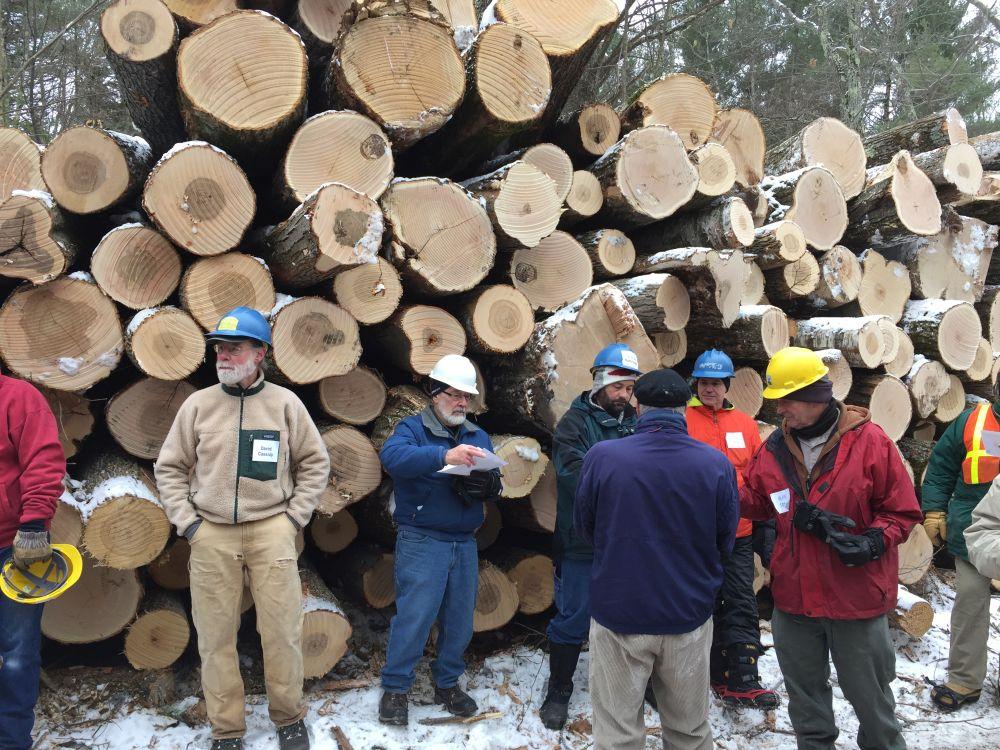
Forest Society managing forester, Wendy Weisiger feels it is important to get the public onto an active timber harvest to learn about sustainable, careful timber harvesting on Forest Society lands. Weisiger says "it’s fantastic to be able to answer people’s many questions and to watch them as they start to better understand what timber harvesting is really all about!"
Indeed, it makes sense to learn about forestry and logging outdoors on an active timber harvest. The approach of the timber tour is to visit stands of trees that have been marked and not yet cut and then visit the area being actively logged to see how the equipment works. Then the tour proceeds through an area that has been treated to see the residual stand that has been released to grow. The tour ends at the landing where logs are piled to be hauled to local or distant sawmills for processing.
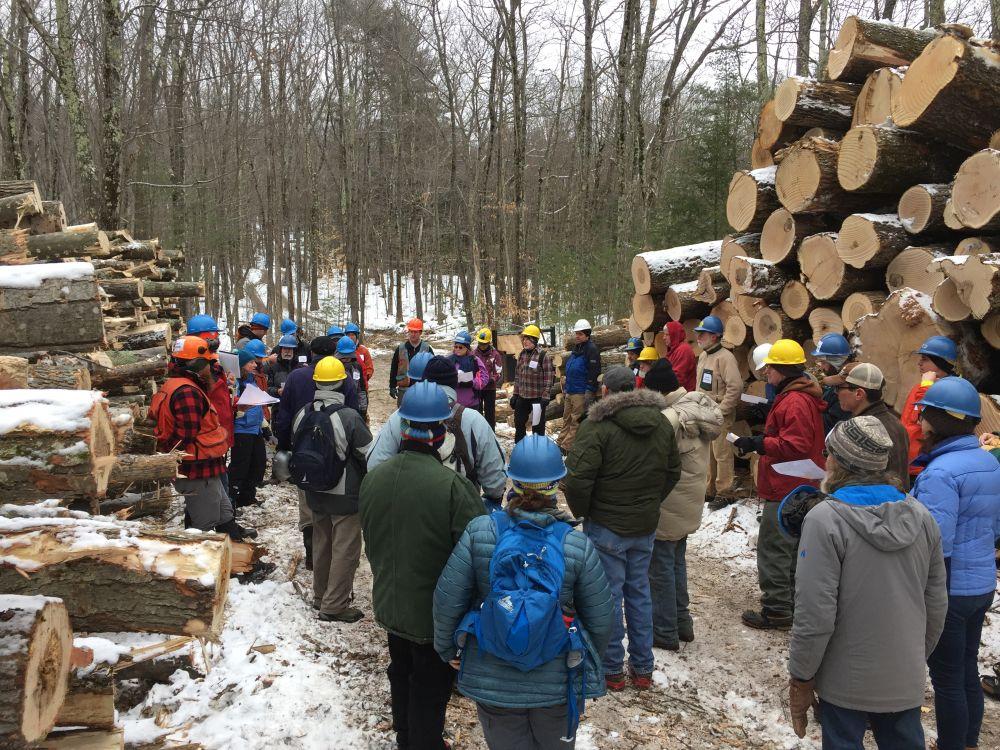
To learn more about the goals of the timber harvest on Mount Monadnock read about the harvest plan:
https://www.forestsociety.org/blog-post/forestry-goals-2016-2017-mt-mon…
